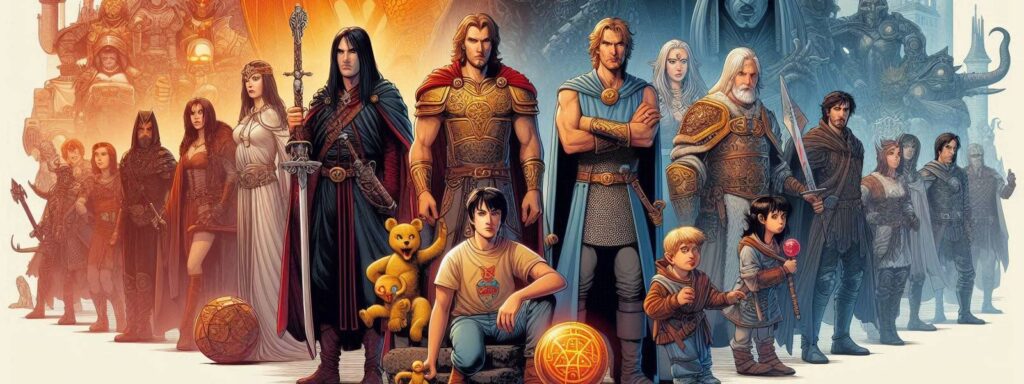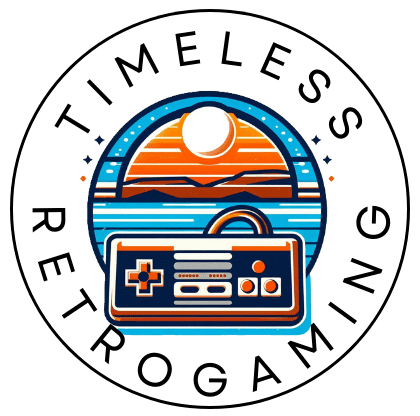
Back in the day, RPGs got their mojo from tabletop games like Dungeons & Dragons. Imagine a bunch of friends crowded around a table, rolling dice, and crafting epic tales together. That camaraderie and creativity were the heart of early RPGs.
Now, picture 1980. A guy named Richard Garriott decided to bring that magic to our computer screens. He created this game called Ultima I: The First Age of Darkness. It was like nothing seen before in the digital world. You had this sprawling world to explore, quests to complete, and baddies to take down.
Garriott’s vision was all about immersion. He wanted players to feel like they were stepping into a whole new universe. Back then, game developers didn’t have all the fancy tech we have now. But Garriott made it work, using the tech limits as a canvas for his creativity. His passion and innovation laid the foundation for future RPGs.
Those early RPGs were a bit rough around the edges. The graphics were basic and the interfaces clunky. But what they lacked in polish, they made up for in-depth and imagination. It’s wild how those limitations spurred creativity. You had to use your imagination to fill in the gaps, just like in tabletop RPGs.
Ultima I wasn’t just a game; it was a revolution. It showed that video games could be more than just high scores and quick reflexes. They could tell stories, evoke emotions, and immerse players in new worlds. That idea would shape the entire future of RPGs.
90s Explosion: From Ultima to The Rise of Modern RPGs
Fast forward to the 90s, and things started getting really exciting in the RPG world. The tech was evolving, and so were the games. We saw a big leap from those simple 2D graphics to more complex 3D environments. This shift brought a whole new level of immersion and detail to RPGs.
Ultima VII made waves with its rich world and intricate storyline. You had this sense of truly being part of an epic adventure, not just playing through levels. Then came The Elder Scrolls: Arena, which expanded that concept further, offering an open world where players could roam freely. Talk about groundbreaking!
And who could forget Fallout? It brought a post-apocalyptic flair to RPGs, combining strategic gameplay with deep narrative choices. Each decision had consequences, and that elevated the player’s experience, making them feel invested in the story.
Technology played a huge role in this evolution. With better graphics and more powerful hardware, developers could create worlds that felt alive and responsive. It wasn’t just about improving visuals; it was about creating a more compelling, engaging experience for players.
Complex narratives became a big deal, too. Characters weren’t just pixels on a screen; they had backstories, emotions, and growth arcs. This focus on storytelling made games more relatable and memorable. It wasn’t just the gameplay that kept people hooked; it was the world and the characters they grew to care about.
The Emergence of Baldur’s Gate: A New Gold Standard
In the late 90s, Baldur’s Gate hit the scene, setting a new benchmark for RPGs. Bioware, the mastermind behind it, brought something fresh to the table. They fused real-time strategy with turn-based combat, creating a unique and engaging system that kept players on their toes.
The storytelling in Baldur’s Gate was a game-changer. Characters were more than just party members; they had fleshed-out personalities, backstories, and relationships. You weren’t just managing stats and gear; you were building bonds and making choices that mattered.
Baldur’s Gate also gave players a sense of agency. You could shape your journey with the decisions you make, influencing everything from dialogue to the game’s outcome. This level of involvement made players feel truly part of the story, not just passive participants.
The game drew heavily from Advanced Dungeons & Dragons (AD&D) rules, giving it a complexity that appealed to both hardcore fans and newcomers. The depth of the mechanics, combined with intuitive gameplay, struck a perfect balance, making it accessible yet challenging.
Bioware’s attention to detail was impeccable. The game’s environments, lore, and quest design were meticulous, making the world feel lived-in and authentic. This meticulous world-building set Baldur’s Gate apart, influencing countless RPGs that followed.
The Evolution of RPG Elements: Mechanics, Storytelling, and World-Building
RPG mechanics have come a long way since Ultima’s pixelated landscapes. Those early days had charmingly simple mechanics, but the industry’s thirst for innovation has brought tremendous change. With games like Baldur’s Gate, we saw an intricate blend of strategy and real-time elements that took gameplay to the next level. Modern RPGs now boast seamless combat systems and intricate interfaces that balance player agency with intuitive controls.
Storytelling has always been the soul of RPGs. Initially, simple plots gave players a taste for adventure, but as technology advanced, so did narratives. Modern RPGs delve into complex, multilayered stories with branching paths and rich character development. Player choices didn’t just affect immediate outcomes but often had long-term ripple effects on the game world. It’s like starring in your own epic tale where every decision carries weight.
World-building has also seen monumental growth. Those early worlds were often limited and linear, but now we have expansive, open-world environments filled with lore, side quests, and dynamic ecosystems. Games are no longer just levels to beat; they are worlds to live in. Developers create settings so richly detailed that players can lose themselves for hours exploring every nook and cranny. These evolving worlds respond to your actions, making the experience deeply personal and immersive.
One of the coolest evolutions is how RPGs handle player choice. It’s not just about picking good or evil; the nuances matter. Decisions shape story arcs, relationships, and even the game’s ending. This freedom gives players a sense of ownership over their adventures, crafting a unique experience tailored to their play style.
The future? Expect even more innovative mechanics, compelling stories, and expansive worlds. With technology like virtual reality and AI, the boundaries of what’s possible are continually pushed. We’re in for some thrilling adventures as developers keep redefining what RPGs can be.
The Legacy and Future of RPGs: Lessons Learned and What’s Next
The influence of games like Ultima and Baldur’s Gate can’t be overstated. They laid down the blueprints for what RPGs could achieve and set standards for future titles. These pioneers showed that games could offer not just escapism but meaningful stories and immersive worlds that resonate with players.
Modern RPGs continue to draw from the rich legacy of these early games while pushing boundaries. Developers today take cues from the intricate storytelling, detailed world-building, and engaging mechanics pioneered by those classics. The balance between innovation and tradition keeps the genre fresh and exciting.
Trends in today’s RPG scene hint at an even brighter future. Indie RPGs are carving out their own niches, often bringing fresh ideas and unique storytelling that mainstream games might shy away from. Their influence sometimes pushes big-name studios to step up their game and take more risks.
Innovation in technology, like virtual reality and artificial intelligence, offers tantalizing possibilities. Imagine an RPG where NPCs react in real-time to your actions or a VR experience that makes you feel like you’ve genuinely stepped into another world. These tech advancements hold immense potential for crafting even more immersive and dynamic experiences.
The future of RPGs isn’t just about what developers do; it’s also shaped by the community. Players’ feedback, engagement, and creativity drive the evolution of the genre. Mods and fan creations often breathe new life into games, extending their longevity and impact. This collaboration between creators and players ensures that RPGs will continue to innovate and captivate for years to come.

